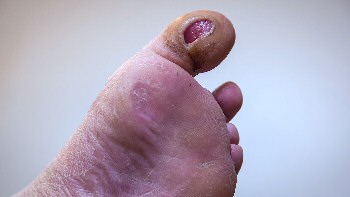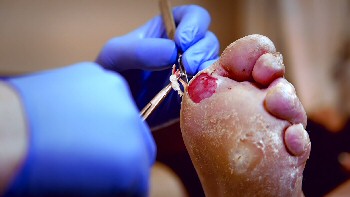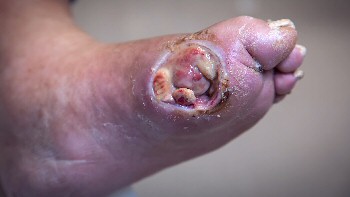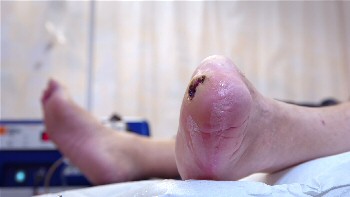|
Liverpool experiencing rise in
diabetes related limb loss

THE sporting City of Liverpool, the
most successful footballing City, in England, home to both Liverpool and Everton
and host of the legendary Grand National Horse Race, have been experiencing an
increase in lower limb loss due to diabetes.
In the period of 2013/14 to 2015/16, there were 78 major lower limb amputation
procedures carried out on patients with diabetes in NHS Liverpool CCG, compared
to 49 in the period 2010/11 to 2012/13. While Liverpool saw this rise, England
overall saw a fall in these disabling, life changing surgeries.
Diabetes is the most common cause of lower limb amputations. A person with
diabetes is around 30 times more likely to have an amputation compared with the
general population, and around 7,400 leg, toe or foot amputations can be
attributed it each year in England.

Since 1996, the number of people diagnosed
with diabetes in the UK has more than doubled from 1.4 million to almost 3.5
million. There are also an estimated 1.6 million undiagnosed diabetes sufferers,
bringing the total to 4.6 million people. That is 4.6 million people who are
estimated to be up to 30 times more likely to have an amputation.
A major diabetic lower limb amputation is above the ankle. Unlike a minor
amputation; which may involve the removal of a toe and can be considered a
preventative treatment; an above the ankle amputation often results in a poor
quality of life can contribute to premature death.
Many of these amputations are preceded by foot ulceration caused by a
combination of impaired circulation and nerve damage; common problems suffered
by people with diabetes.
It stands to reason therefore that managing or even preventing these ulcers
should reduce the need for life changing surgery and see more people with
diabetes enjoying fuller lives for longer.

Frank Webb, from the College of Podiatry, is a
leader in the field of diabetic podiatry and his approach to preventing and
managing ulcers could help in the fight to save the limbs and lives of people
affected by this devastating disease which is becoming known as the biggest
epidemic of the 21st Century.
Pilot projects in the North of England have seen good results that use gold
standard treatment strategies, rapid referrals to specialist diabetic foot teams
incorporating multidisciplinary working, close collaboration between primary,
community and acute providers and rapid access to specialist services; all in a
community setting.

Frank, who is discussing this approach at the College of Podiatry Conference in
Liverpool this week said:- "Commissioners and service providers
should ensure access to a foot protection service in the community and a multi
disciplinary foot service team, but also need to think out of the box to ensure
that the growing socioeconomic burden of diabetic foot complications are managed
effectively and efficiently."
|
